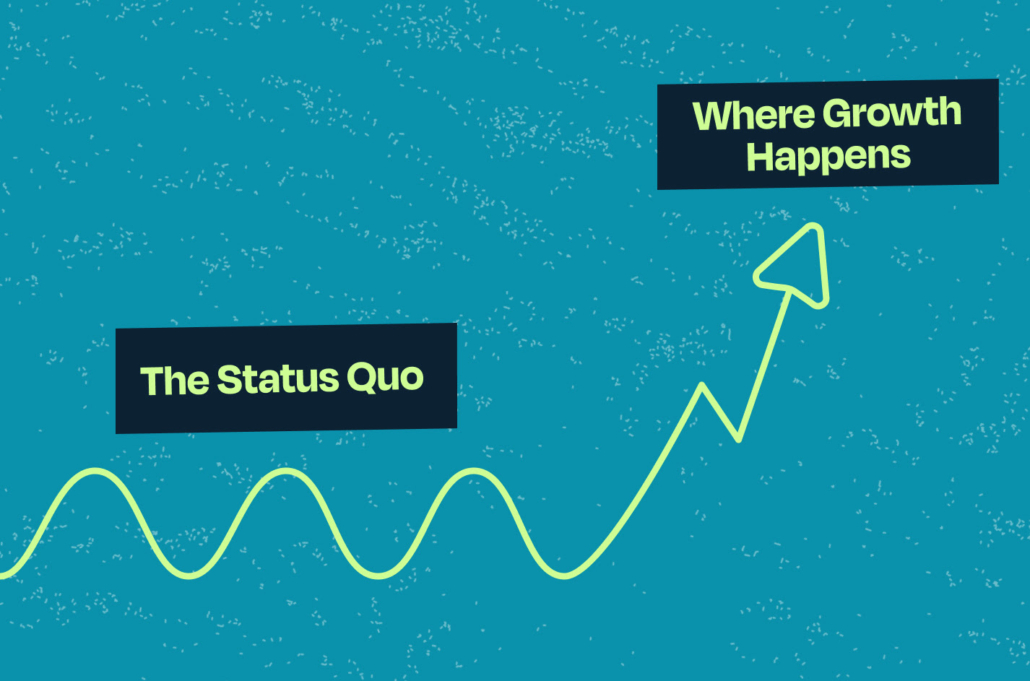Building a Growth Marketing Culture: Fostering Data-Driven Marketing Decision-Making
Chances are you’ve worked at a job where you’ve walked on pins and needles–doing everything you can to avoid failure and not draw too much attention to anything that can be construed as failure. An intolerance of failure is more toxic to company culture than arsenic. Simply put: When people are scared to fail, or scared to explore out of their comfort zone, growth is stunted.
At Tuff, we’ve adopted a growth marketing culture that focuses on data-driven decision-making. It’s helped us develop and attract best-in-class talent internally. It’s helped us drive better results for our business and our partner’s businesses. All thanks to our clear focus on driving revenue and results.
How we’ve gotten to a place where growth culture and data-driven mindsets intersect is pretty simple: we always strive to test and learn, and do so in a thoughtful manner. Here’s how we do that:
What’s a Growth Marketing Culture?
A growth marketing culture is an environment in which people feel open and free to try new things and embrace failure. This doesn’t have to be “outside the box” thinking, but can be as simple as learning new skills and tactics, or taking on new challenges that test your expertise.
How to Create a Growth Marketing Culture
At Tuff, we’ve created a growth marketing culture by:
- Encouraging a “test and learn” mindset
- Acknowledging failures, and learning from them rather than keeping score
- Establishing a career framework
- Setting measurable quarterly OKRs
- Providing an annual learning stipend
- Implementing HeyTaco Rewards for book or class expenses
- Providing opportunities for employees to be involved in work that falls outside their normal job description (sales, Tuff’s marketing strategy, etc.)
If someone wants to come to work, execute their job description, and nothing else? That’s fine as long as they are willing contributors to the workplace. But, if someone wants to continue to learn new things and grow, there’s a clear path and opportunity to do so.
What’s a Data-Driven Mindset?
A data-driven mindset is a key component of a growth culture. What it means is you evaluate everything through the lens of numbers, instead of emotion or “gut feeling”. It’s important to note that everything can be measured in some form or fashion, if not directly by data.
When using a data-driven mindset, you follow this process when evaluating a problem:
- What is the problem I’m trying to solve? Why does it matter?
- How could I potentially solve it?
- How can I measure what I use to solve it?
- What did the results show me?
- What will I do differently next time?
Here’s a real-life example:
- Problem: There are five employees at Tuff who love F1, and all think they are the fastest go-karter in the company. We’re wasting a lot of time debating who is fastest instead of working.
- Solution: We go go-karting at a track that measures lap times, and also grid position to establish who is fastest.
- Measurement: Whoever finishes first, wins. We’ll also factor in the fastest lap time to see who is the fastest in a single lap.
- Results: Raj won the overall race, but Richard set the fastest lap time of the day by nearly 2-tenths of a second. Inconclusive data, but we did confirm that they are the two fastest overall employees in our company.
- Our next test: We’ll use a single KPI (grid position or lap time) to declare a winner. There’s too much noise in our current data set.
Here’s a real-life marketing example:
While the above is a bit of a ludicrous example, it’s proof that you can apply a data-driven mindset to just about anything if you try hard enough. Here’s a real-life marketing example, though, if you don’t believe me.
- Problem: Search CPA is increasing and total signup volume is decreasing on organic and direct channels since I pulled back on top-of-funnel spend because CPA was healthier on Search than Meta.
- Solution: Implement a limited flight test on Meta in 5 test states, and evaluate how blended CPA is influenced in the test states vs. the control states. (Note: There are other ways to measure top-of-funnel success.
- Measurement: Signup growth – Total signups in the 5 test states vs. control group compared to the previous period.
- Results: 22% increase in total signups in the test states, blended CPA was 5% lower in those states because of the growth in organic and direct traffic.
- Our next test: Implement this test in an additional 5 states to see if we can replicate the results and scale to the remaining states.
Without putting the data-driven mindset to the test, we could have just thrown Meta back into the mix without a clear strategy to determine if it helped total signup volume and CPA. By creating a test structure and clear definitions for what we were measuring, we were able to identify that top-of-funnel efforts have influence outside of their channel silo.
How a Growth Marketing and Data-Driven Mindsets Influence Decision Making
When challenges are presented through the lens of a data-first growth marketing culture, it removes all the guesswork. If you want to go out of your comfort zone and try something new, you will know if it worked or not, and what you can do differently next time. Your new status quo is a continual self-reflection of “Did this work?” and “Why or why not?”, and you’re not scared to evaluate why it didn’t.
It’s important to note that a business leader may be reading this and thinking to themselves, “Having my team continually try new things seems risky, why can’t they just perfect what I hired them to do?” It’s a valid point.
With our test-and-learn mindset, it’s essential to set appropriate boundaries and goals to ensure that the fallout of failure isn’t so extreme that it kills the excitement of growth in the first place.
A good rule of thumb is that a growth test needs to be significant enough to make an impact, but small enough that if it is a complete failure, then jobs, partnerships, morale, and our growth mindset is not at stake.
This is applicable to learning new skills, trying new tactics, or improving existing skills alike. Here are a few examples:
Trialing New Skills With a Growth Mindset
An employee wants to assist with research and analysis for a sales pitch. Give them a timeline so they have the opportunity to collect feedback and course correct. You wouldn’t want to have them take a first attempt at a new skill without a solid backup plan.
Trialing New Tactics or Improving Existing Skills / Strategies with a Growth Mindset
A growth marketer identifies an opportunity to trial TikTok ads for an existing brand. The brand has only seen success on Meta so far. Dedicate a test budget to get initial benchmarks, evaluate, and test again to see if you can get directional improvement. Make sure the budget isn’t so large that the partnership is at risk if it fails. (But it must be significant enough to gain insights.)
How a Data-Driven Mindset Leads to Better ROI
Not only does a growth culture lead to better employee engagement, but it also leads to better business results. But how?
- It ensures you’re not leaving opportunities on the table (missed revenue).
- It requires you to know the impact of your efforts and where to focus next (intentional measurement).
- It implies that you’re prioritizing the most impactful things (improving intentionality).
When adopted, this mindset impacts all areas of your marketing team, not just your acquisition experts (paid social, PPC, etc.). Make sure you include your creative team!
With creative in a data-driven mindset, you don’t create assets because they’re “cute”, or you like the look of them. Instead, you’re leveraging performance creative to get better results. You’re also evaluating why certain aspects worked or didn’t work to further the effectiveness of your output. A recent test with one of our partners with this mindset led to a 66% reduction in Cost per Application in 3 months. Another partner, Soona, experienced a 57% increase in total sales, with a $200 reduction in CPA in three months. That’s ROI, and it came straight from the data-driven mindset, and a willingness to get nitty-gritty with the testing details.
Looking for a Partner Who Really Has a Growth Culture and Data-Driven Mindset?
We’ve set out to make Tuff a place that fosters growth internally, which drives results for our partners. By using a data-driven mindset, we don’t just say we’ll drive better results, we’ll go do it. If that sounds like something you’re interested in, get in touch.

Richard has spent the last five years working at digital agencies, exploring various industries and company lifecycles. I’ve created and implemented growth campaigns on just about every platform for startups, $20,000,000 a year companies, and everything in-between. When not at work, I can be found cheering on the Penguins or Steelers, spending time with my wife and son, playing disc golf, baking, or walking my dogs.








